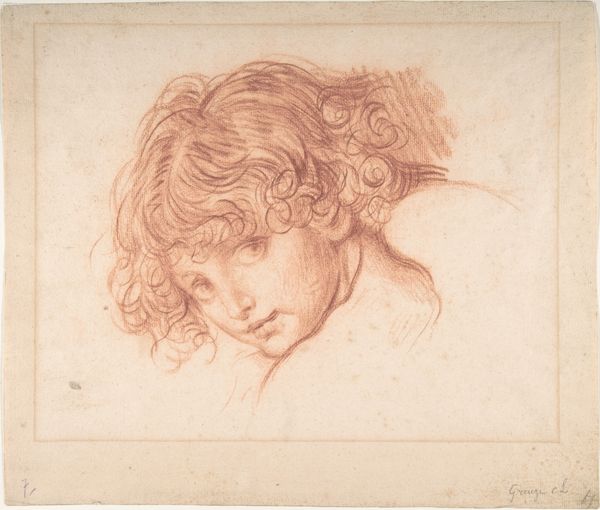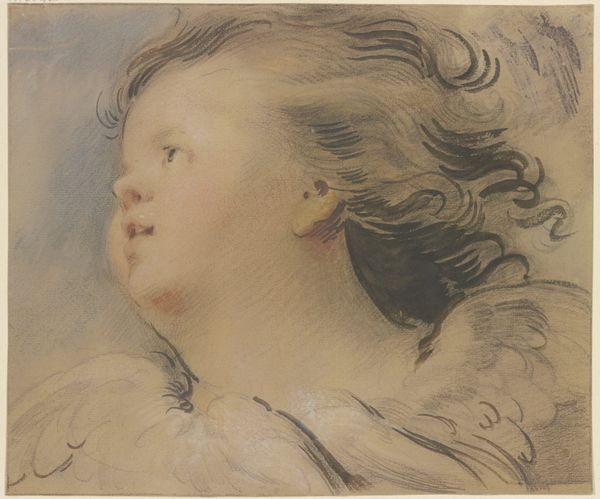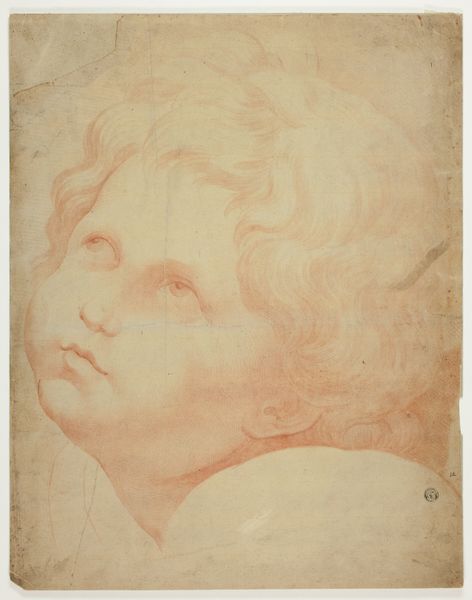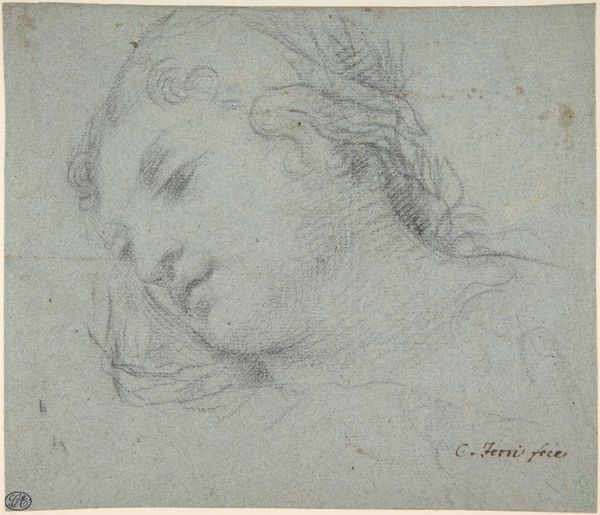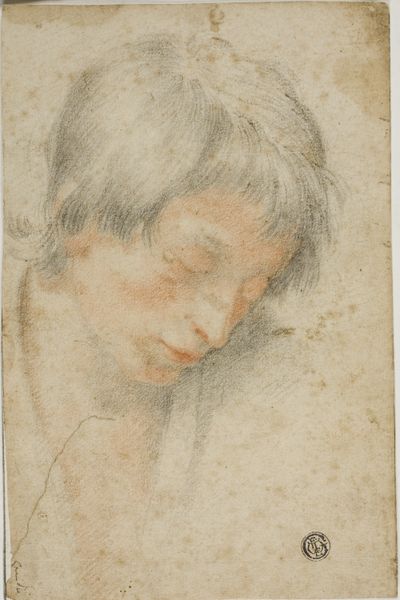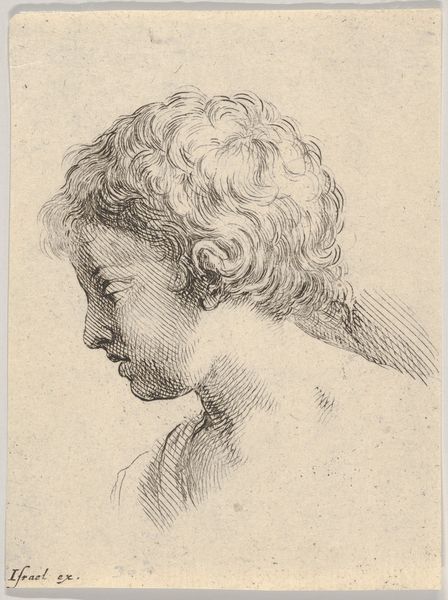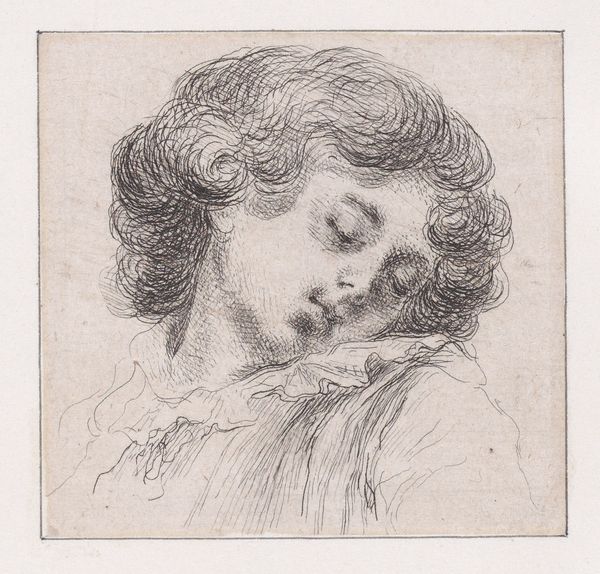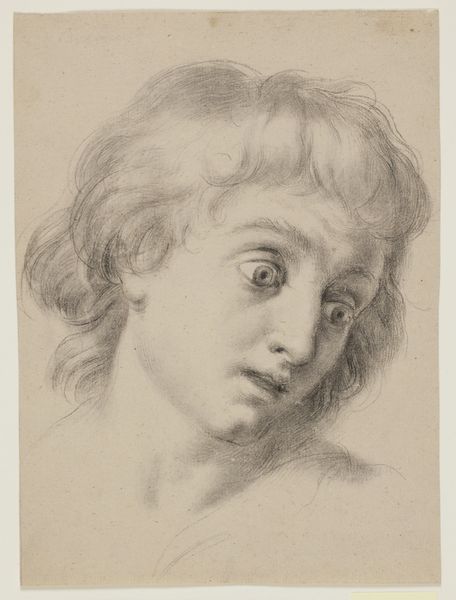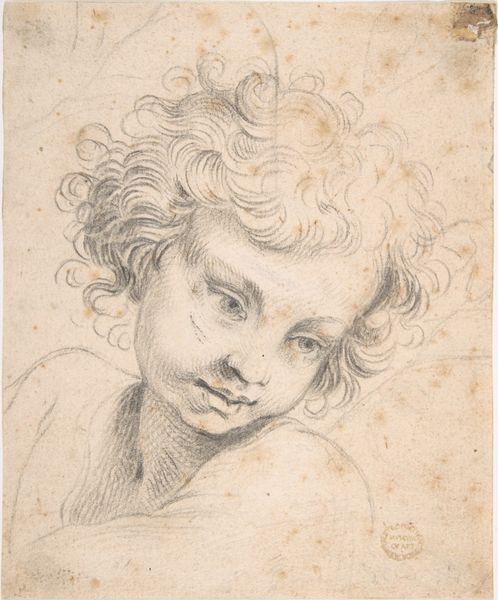
drawing, pastel
#
portrait
#
drawing
#
figuration
#
portrait drawing
#
pastel
#
history-painting
#
portrait art
#
rococo
Dimensions: height 233 mm, width 268 mm
Copyright: Rijks Museum: Open Domain
Jacob de Wit rendered this cherubic head in chalk, a study in the softness of childhood innocence and the divine. The cherub, with its origins in ancient Near Eastern protective spirits, evolved into a symbol of divine presence in Judeo-Christian iconography. Note the head tilted upwards, a gaze towards heavenly realms, signifying spiritual yearning. This pose echoes across centuries, from Renaissance Madonnas to Baroque saints, each instance carrying a collective memory of piety and devotion. Consider the cherub's soft features; the downy curls, the plump cheeks. These are not merely aesthetic choices but psychological triggers, tapping into our innate responses to infancy and purity. It is a powerful connection to the subconscious, where collective memory and shared human experiences reside. Observe how this symbol has shifted through time. Initially fearsome guardians, cherubs morphed into symbols of love and innocence. This transformation reflects a deeper cultural shift, a softening of the divine image to mirror human ideals. This cyclical progression speaks to art's enduring power to reflect and reshape our deepest beliefs.
Comments
No comments
Be the first to comment and join the conversation on the ultimate creative platform.

